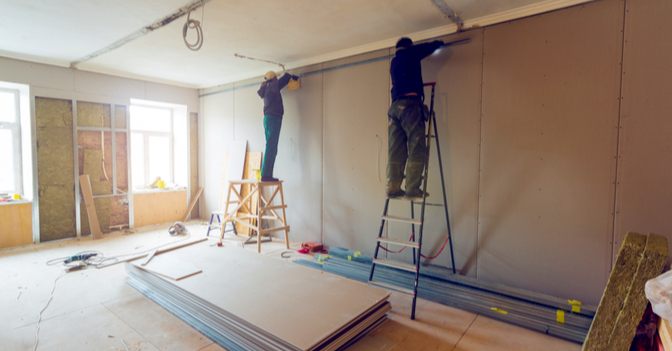Nearly a year after the Coronavirus Aid, Relief, and Economic Security (CARES) Act was signed into law, taxpayers have already received much-needed aid in response to the ongoing pandemic. Among that taxpayer relief is a much-welcomed correction to the definition of Qualified Improvement Property (QIP). This correction could mean larger deductions for property owners when filing their taxes this year.
QIP is an improvement a taxpayer makes to the interior of a nonresidential building. This improvement must be made after the building was originally placed in service. In 2017, the Tax Cuts and Jobs Act (TCJA) defined QIP as nonresidential real property with a 39-year depreciable life. However, this 39-year recovery period strayed from the TCJA’s original intent.
The TCJA originally intended to include QIP in the definition of 15-year property, but a drafting error resulted in QIP omission. This error was disadvantageous to taxpayers, as QIP was ineligible for the 100% first-year bonus depreciation. As a result, taxpayers could not receive an accelerated depreciation deduction for these improvements in the year they were placed in service.
Under the CARES Act, the Internal Revenue Code definition of 15-year property has been retroactively amended to include QIP. The amendment applies to QIP placed in service after December 31, 2017. This is an advantageous outcome for taxpayers for a couple of reasons. First, taxpayers can have access to cash flow by amending a prior year’s return to claim the additional depreciation deduction. Second, when this correction is applied in conjunction with the new Net Operating Loss rules under the CARES Act, amending a prior year return to claim the missed bonus depreciation may also help maximize a net operating loss when applied to a tax year prior to TCJA enactment.
The IRS has provided taxpayers a few options for claiming the missed bonus depreciation on QIP placed in service in the tax years 2018 through 2020. First, taxpayers have the option to file an amended tax return for the year that QIP was placed in service, as mentioned above. Note, however, that partnerships subject to the Bipartisan Budget Act (BBA) audit regime would have had to file an amended return for 2018 or 2019 by September 30, 2020. Alternatively, taxpayers can claim the missed depreciation deduction by filing Form 3115, Application for Change in Accounting Method, with their 2020 returns. Taxpayers organized as partnerships also have the option to file an Administrative Adjustment Request (AAR) to take advantage of the technical correction to QIP if the partnership is subject to the new centralized audit regime.
The following example highlights the favorable impact on taxable income when claiming the additional depreciation deduction on QIP:
In 2019, a taxpayer placed in service $50,000 of QIP. The taxpayer claimed a total depreciation deduction of $1,282 on the 2019 tax return. However, using the revised QIP definition, he or she is now eligible to claim a $50,000 depreciation deduction on the 2019 return. To claim the additional depreciation of $48,718, the taxpayer can file Form 3115 with the 2020 tax return. He or she may also file an amended 2019 return within the period of limitations on assessment for the applicable tax year.
If you would like to speak with a tax professional about claiming this missed depreciation deduction for qualified improvement property on your 2020 tax return, or if you would like assistance with any matter involving tax planning and strategy or business advisory, contact a PYA executive below at (800) 270-9629.





